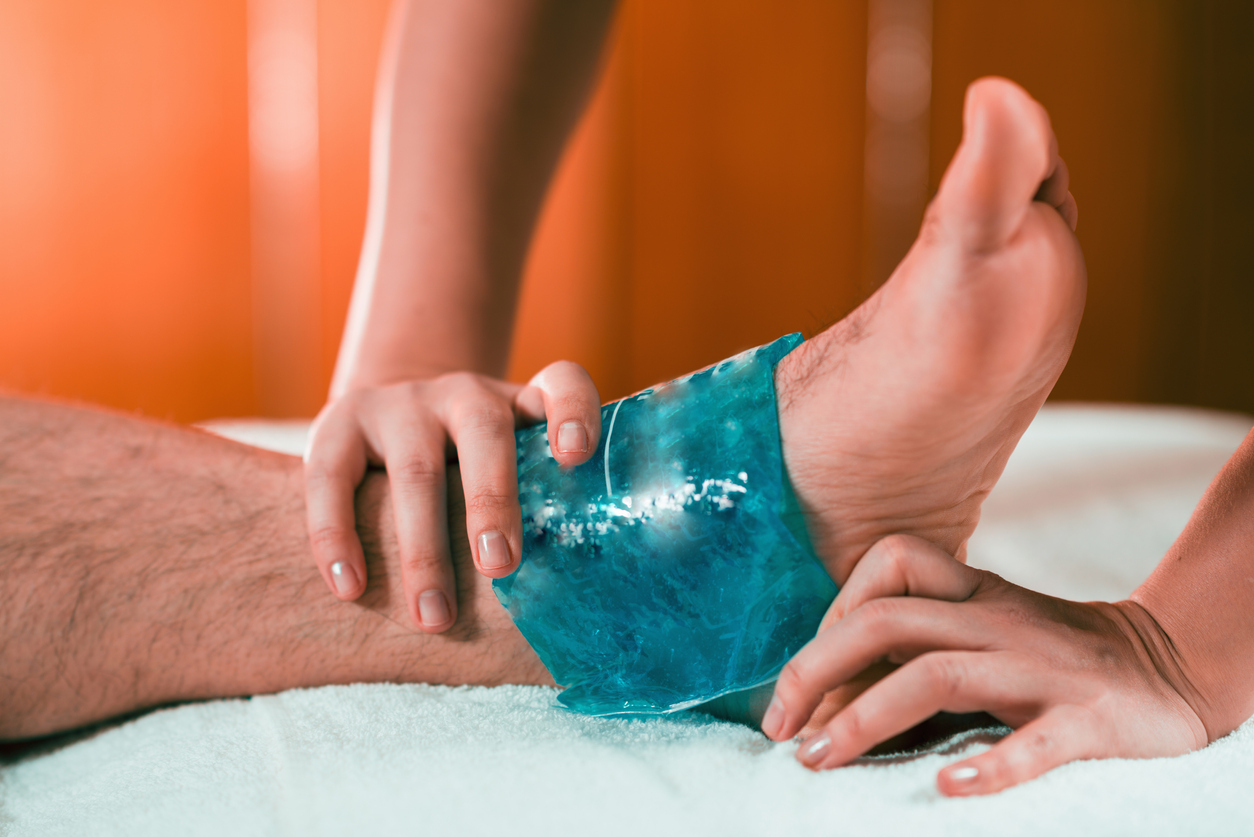Acute injuries often bring a surge of pain and inflammation. While the discomfort is unpleasant, inflammation is a natural response by the body to repair damaged tissues. However, excessive inflammation can hinder healing and prolong recovery. This is where ice therapy comes in, offering a readily available and effective way to manage inflammation following an injury. However, for optimal recovery, ice therapy should be followed by a comprehensive physiotherapy program.
The Cooling Effect of Ice Therapy
Ice therapy, also known as cryotherapy, involves applying cold packs or ice wrapped in a cloth directly to the injured area.
When applied, ice constricts blood vessels, reducing blood flow and thereby minimizing swelling and inflammation. This translates to a decrease in pain and discomfort. Research suggests that ice therapy can be most beneficial when applied within the first 24-72 hours of an injury [Gracey et al., 2014].
Here are some key benefits of ice therapy for inflammation:
- Pain Relief: Ice reduces inflammation-induced pain, offering temporary relief and allowing for better mobility [Bleakley et al., 2012].
- Reduced Swelling: Ice constricts blood vessels, minimizing fluid buildup and reducing swelling at the injury site [Hubscher & Chen, 2018].
- Muscle Spasm Control: Ice can help manage muscle spasms associated with injury, promoting relaxation and improving range of motion [Lauretti & Fredericson, 2010].
Important Note: While ice therapy is generally safe for most healthy adults, it’s crucial to use it correctly. Avoid direct skin contact with ice and limit application time to 15-20 minutes at a time, with breaks in between.
It’s always best to consult a healthcare professional before using ice therapy, especially if you have circulatory problems, diabetes, or other health concerns.
Physiotherapy: The Path to Complete Recovery
While ice therapy provides immediate relief and reduces inflammation, it doesn’t address the underlying cause of the injury or promote long-term healing. This is where physiotherapy plays a vital role. A physiotherapist will assess your injury, develop a personalized treatment plan, and guide you through exercises designed to:
- Improve Range of Motion: Regain lost mobility and flexibility in the affected area.
- Strengthen Muscles: Rebuild strength and stability to prevent re-injury.
- Improve Balance and Coordination: Enhance proprioception (body awareness) to prevent future falls or missteps.
- Promote Healing: Specific exercises can encourage tissue healing and improve blood flow to the injured area.
Physiotherapy can also address any underlying biomechanical issues that may have contributed to your injury, helping to prevent future problems.
Additionally, physiotherapists can provide valuable education on proper movement patterns, injury prevention strategies, and self-management techniques.
Synergy for Optimal Recovery:
Ice therapy and physiotherapy work best in tandem. Ice therapy offers immediate pain relief and reduces inflammation in the acute phase, while physiotherapy provides the foundation for long-term healing and a return to full function.
Mountainview Health and Wellness: Your Partners in Recovery
At Mountainview Health and Wellness, our team of experienced physiotherapists works collaboratively with patients to create personalized treatment plans.
We offer various modalities, including ice therapy and manual therapy techniques, to manage inflammation and promote healing. We are committed to helping you achieve a full recovery and get back to the activities you love.
References:
- Bleakley, J. R., Costello, J. T., McDonough, S. M., Lopes, A. D., & Dierks, K. B. (2012). The role of cryotherapy in modern musculoskeletal rehabilitation. Current Sports Medicine Reports, 11(4), 232-239. https://www.sciencedirect.com/science/article/abs/pii/S1466853X21000055
- Gracey, J. P., Moran, D. S., & Hing, W. A. (2014).
Cryotherapy in sport injury rehabilitation. Sports Medicine (Auckland, N.Z.), 44(12), 1527-1544.
- https://pubmed.ncbi.nlm.nih.gov/37170956/
- Hubscher, M., & Chen, W. Y. (2018). Cryotherapy for soft tissue injuries: A systematic review and meta-analysis of RCTs. British Journal of Sports Medicine, 52(23), 1483-1490. https://journals.lww.com/acsm-csmr/fulltext/2019/04000/whole_body_cryotherapy_in_sports_medicine.11.aspx
- Lauretti, G. M., & Fredericson







 Copyright Mountainview Health & Wellness
Copyright Mountainview Health & Wellness